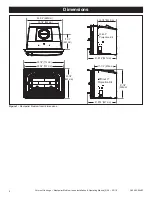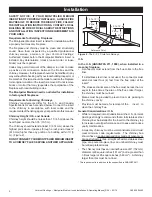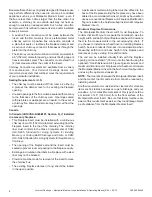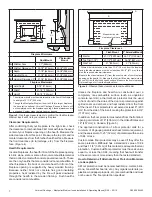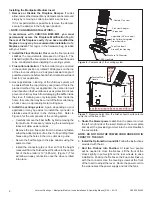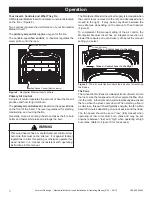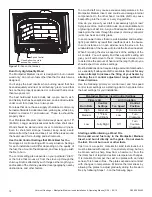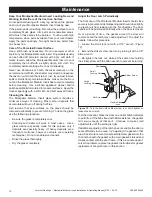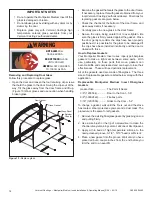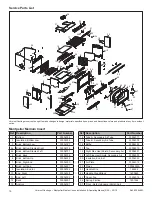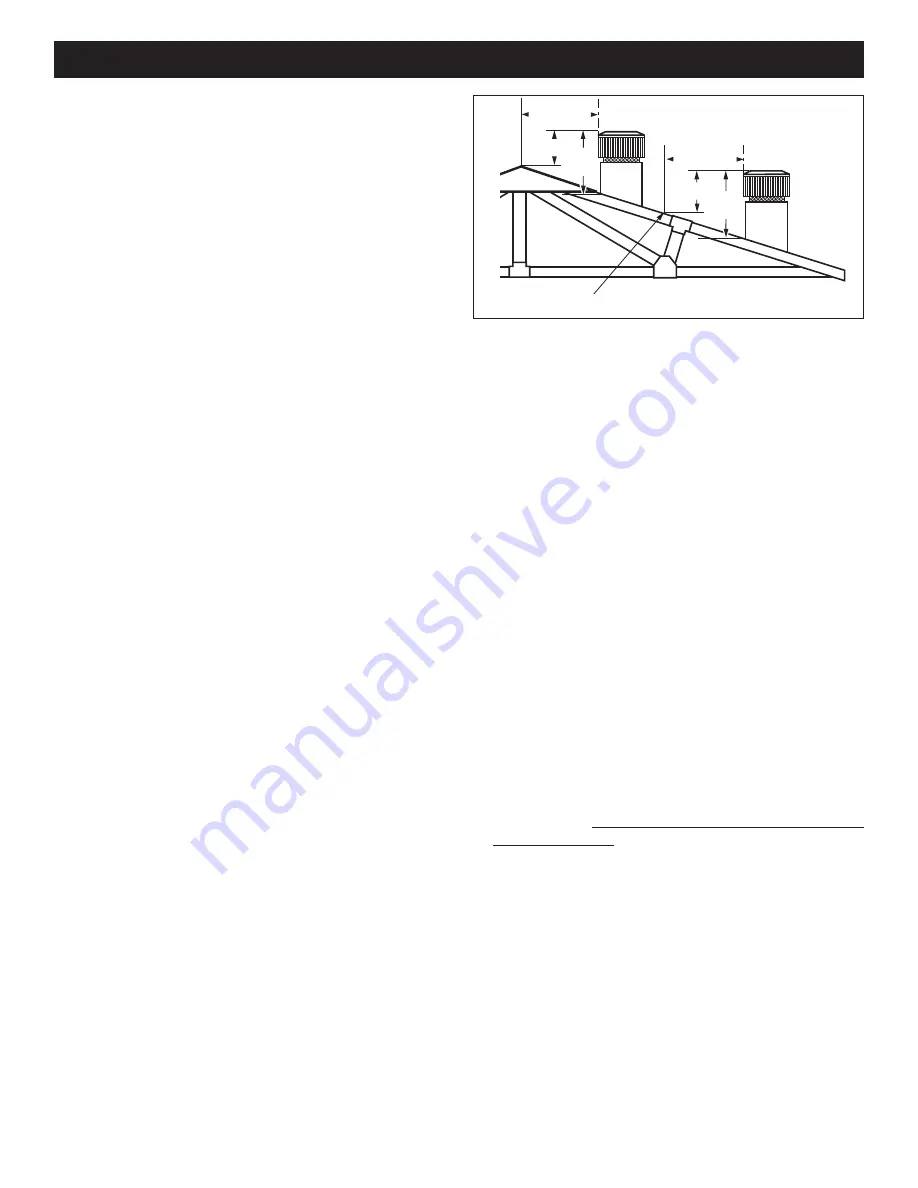
5
Vermont Castings • Montpelier Medium Insert Installation & Operating Manual_R26 • 05/19
3-90-30004403
SAFETY NOTICE: IF YOUR MONTPELIER MEDIUM
INSERT IS NOT PROPERLY INSTALLED, A HOUSE FIRE
MAY RESULT. TO REDUCE THE RISK OF FIRE, FOLLOW
THE INSTALLATION INSTRUCTIONS. CONTACT LOCAL
BUILDING OR FIRE OFFICIALS ABOUT RESTRICTIONS
AND INSTALLATION INSPECTION REQUIREMENTS IN
YOUR AREA.
Requirements for Existing Fireplaces
The Montpelier Medium Insert is listed for installation within
a properly built masonry fireplace.
The fireplace and chimney must be clean and structurally
sound. Have them inspected by a qualified professional
chimney sweep, a mason, or your Vermont Castings’
Authorized Dealer before the Montpelier Medium Insert is
installed. Any deterioration (cracks, loose mortar or loose
bricks) must be repaired.
Codes may permit removal of the damper in order to make
a positive vent connection between the firebox and the
chimney. However, the fireplace should not be modified in any
way without first checking with your local building inspector or
fire marshal. Provision should be made to restore the fireplace
to its original condition if the insert is removed. Do not remove
bricks or mortar that may jeopardize the compliance of the
fireplace with local building codes.
The Montpelier Medium Insert is not listed for installation
in factory-built fireplaces.
Requirements for Existing Chimneys
Chimney requirements differ for the U.S. and Canada.
Specifications for each are listed below. Connect the insert
to the chimney in accordance with local codes and the
requirements of the listing agency as specified in this manual.
Chimney Height / U.S. and Canada
Chimney height should be no less than 15’ (4.5 m) above the
hearth and no more than 35’ (10.5 m).
The chimney should extend at least 3’ (914 mm) above the
highest point where it passes through a roof, and at least 2’
(610 mm) higher than any portion of a building within 10’ (3
m). (Figure 2)
DO NOT CONNECT YOUR MONTPELIER MEDIUM INSERT
TO A CHIMNEY FLUE SERVING ANOTHER APPLIANCE.
Installation
U.S.
In the U.S. (ANSI/NFPA 211, 1988), when installed in a
masonry fireplace:
• A connector must extend from the flue collar to the flue
liner.
• If a stainless steel liner is not used, the connector must
extend at least four (4) feet from the flue collar of the
insert.*
• The cross sectional area of the flue must be less than or
equal to three times the area of the flue collar.If larger,
the chimney must be re-lined.
• Means must be provided to prevent room air passing to
the chimney cavity.
• Provision must be made for removal of the insert to
clean the chimney flue.
General Considerations / U.S.
• While not required in most jurisdictions in the U.S., Vermont
Castings strongly recommends that a full stainless steel
chimney liner be installed for the insert to the chimney top
to increase overall performance and to ease and reduce
yearly maintenance.
• A masonry chimney must be well-constructed and must
meet minimum code requirements. The chimney flue
should have a code-approved liner made of masonry or
pre-cast refractory tiles, straight or flexible stainless steel
pipe, or a poured-in-place liner. An unlined chimney must
be relined professionally.
• The chimney must have a nominal flue size of 6" (152 mm)
diameter or 28 square inches (181 cm
2
) but no greater than
3 times larger or 85 square inches (548 cm
2
). A chimney
larger than this must be re-lined.
2' Min.
2' Min.
3'
Min.
0 To 10'
3'
Min.
0 To 10'
AC617
RLTSKC8
2/11/98
Reference Point
Figure 2
- The 2’-3’-10’ rule for chimneys.
* This requirement is in addition to those specified in ANSI/NFPA211.




